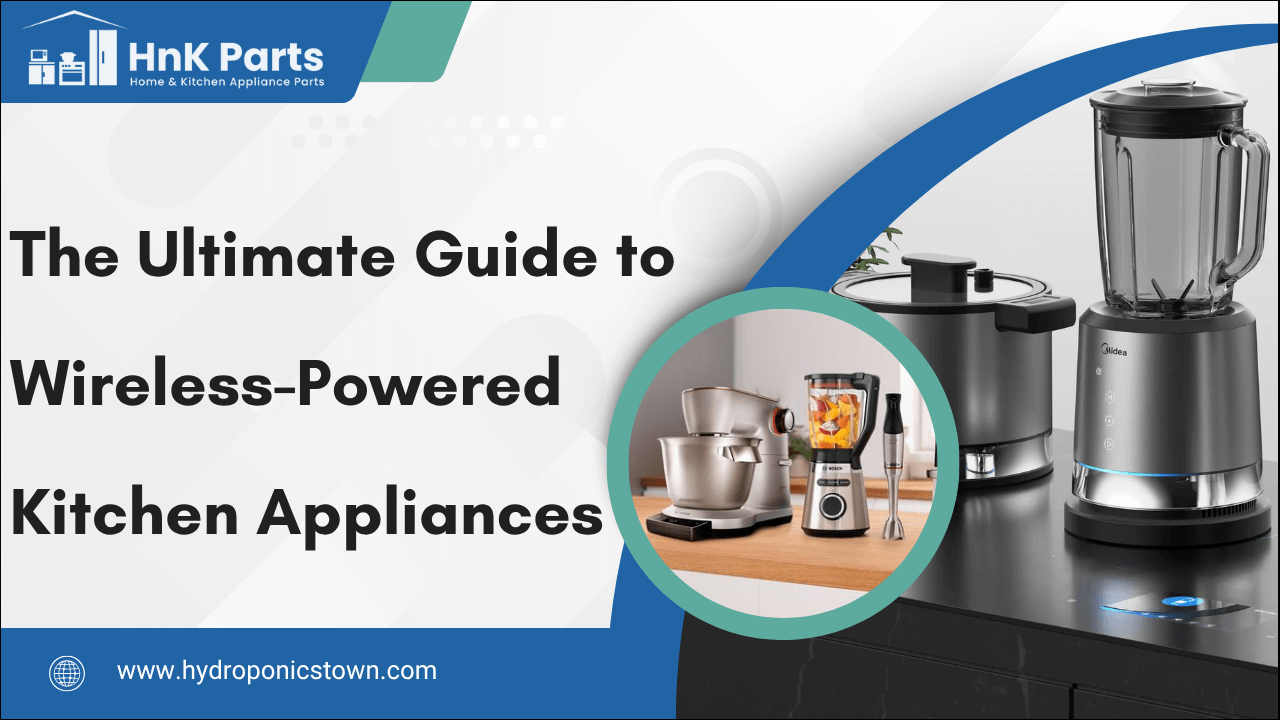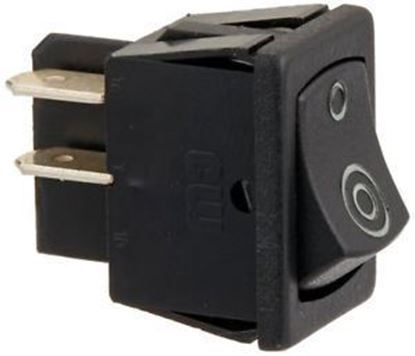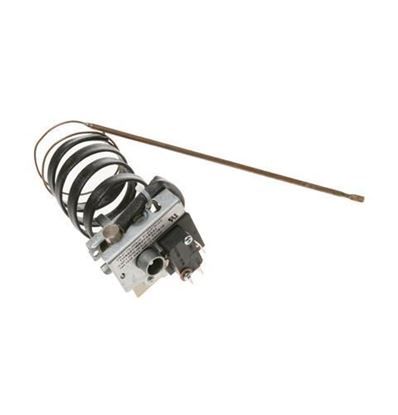
The Ultimate Guide to Wireless-Powered Kitchen Appliances
The modern kitchen, once a realm of tangled cords and fixed outlets, is on the cusp of a revolutionary transformation. Imagine a countertop that can power any appliance placed upon it, blenders that whir without a plug, and kettles that heat silently through unseen forces. This isn't science fiction; it's the dawning reality of wireless power, and its growing relevance in smart kitchens is undeniable. This exciting shift is driven by advancements in key technologies, primarily induction coils and power boards, which are making the cord-free kitchen an increasingly tangible prospect. As we delve into the mechanics and potential of this innovative technology, you'll discover how these invisible currents are poised to redefine convenience and efficiency in our homes.
What Are Wireless-Powered Kitchen Appliances?
Wireless-powered kitchen appliances are devices that receive electrical energy without needing to be physically plugged into a wall outlet. The evolution of wireless power has seen it transition from niche applications, such as electric toothbrushes, to widespread adoption in mobile phone charging pads. Now, it's making significant inroads into the kitchen, promising to declutter countertops and enhance safety.
The fundamental difference between traditional and wireless-powered appliances lies in their energy transfer mechanism. Traditional appliances rely on conductive power transfer, where electricity flows directly through physical wires and plugs. Wireless appliances, however, utilize non-conductive methods, primarily electromagnetic fields, to transfer energy across a small air gap. This eliminates the need for cords, making appliances more versatile and kitchens more aesthetically pleasing.
Key Components Powering Wireless Appliances
In wireless power technology, there are two critical components in kitchen appliances: induction coils and power boards. Understanding their function is essential to grasping how these cord-free innovations work.
1. Induction coils
Induction coils are the primary mechanism for wireless power transfer, operating on the principle of electromagnetic induction. This concept dictates that a changing magnetic field can induce an electric current in a nearby conductor. In a wireless power system, there are typically two main coils: a transmitting coil and a receiving coil.
How they work:
-
Transmitting coil: Located within the charging pad or the surface of a countertop, this coil is connected to a power source. When electricity flows through it, it creates a fluctuating magnetic field around it.
-
Receiving coil: When the blender, kettle is placed within the magnetic field generated by the transmitting coil, the fluctuating field induces an electric current in the receiving coil. This induced current then powers the appliance or recharges its internal battery.
2. Power boards
While induction coils handle the actual transfer of energy, power boards (also known as control boards or power management units) are behind the scenes. These electronic circuits manage and regulate the flow of power, ensuring safe and efficient operation of wireless appliances.
-
Voltage regulation: The power received by the appliance's receiving coil might not be at the exact voltage required by its internal components or battery.
-
Heat management: Wireless power transfer, like any electrical process, generates some heat. The power board monitors temperatures and can adjust power delivery or activate cooling mechanisms to prevent overheating, ensuring both appliance longevity and user safety.
-
Communication and control: In smart kitchen environments, power boards facilitate communication between the appliance and other smart home devices or the user's smartphone. This allows for features like remote control, usage monitoring, and personalized cooking settings.
-
Integration with IoT: Modern power boards are often equipped with microcontrollers and communication modules (like Wi-Fi or Bluetooth) that enable seamless integration with the Internet of Things (IoT).
How Wi-Fi Appliances Are Revolutionizing Home Life Right Now
Real-World Applications and Product Examples
The concept of wireless power in the kitchen is rapidly moving from theoretical discussions to tangible products. While mass adoption is still on the horizon, several real-world applications and product examples showcase the immense potential of this technology.
The most prominent example already in many homes is the induction cooktop. Although often wired into the mains, the way it heats cookware is entirely wireless, using electromagnetic induction. When an induction-compatible pot or pan is placed on the surface, the induction coils beneath the glass top create a fluctuating magnetic field that directly heats the cookware itself, rather than the cooktop surface. This results in extremely fast heating, precise temperature control, and improved energy efficiency compared to traditional electric or gas stoves. Companies like Bosch, Miele, and Samsung offer a wide range of induction cooktops, demonstrating the established viability of inductive heating in the kitchen.
Beyond cooktops, the true vision of a fully wireless kitchen involves smaller appliances. Imagine a future where your blender, toaster, coffee maker, and even your kettle draw power wirelessly from the countertop.
Several companies are actively developing and testing such innovations:
-
Wireless blenders and kettles: Startups and established appliance manufacturers are exploring systems where these commonly used items can be powered by simply placing them on a designated zone on the countertop. This eliminates the need to plug and unplug, making for a cleaner and more flexible workspace.
-
Integrated countertops: The ultimate goal is a smart countertop that functions as a single, multi-purpose power surface. Companies like Wireless Power Consortium (WPC) and others are working on integrating wireless charging technology directly into kitchen surfaces, allowing any compatible appliance to be powered anywhere on the counter.
-
Smart kitchen hubs: Some concepts envision integrated hubs within the countertop that not only provide wireless power but also offer smart features like weight measurement, integrated displays, and connectivity to recipes or smart home ecosystems.
Advantages of Wireless Kitchen Technology
Wireless-powered kitchen appliances are transforming modern kitchens by enhancing functionality, aesthetics, and safety.
|
Advantage |
Description |
|
Seamless aesthetics |
Enables a clean, minimalist design by eliminating visible cords; appliances can be freely positioned without needing nearby outlets. |
|
Easy cleaning & reduced clutter |
Simplifies surface cleaning by removing cables that collect grime and dust; eliminates the hassle of tangled wires. |
|
Enhanced safety & durability |
Reduces risks of tripping and electrical hazards; sealed surfaces prevent water damage and enhance appliance longevity. |
|
Increased flexibility & adaptability |
A single wireless surface can power various appliances, allowing dynamic kitchen setups and saving space in compact environments. |
Challenges and Limitations
Despite the exciting potential of wireless-powered kitchen appliances, several significant challenges and limitations need to be addressed before widespread adoption can occur.
-
Energy transfer efficiency: While wireless power transfer has made strides, achieving the same level of energy efficiency as a direct wired connection remains a challenge for many applications, especially over greater distances. Some energy is inevitably lost in the form of heat during the electromagnetic transfer process. For high-power kitchen appliances like ovens or dishwashers, this efficiency gap becomes more pronounced, potentially leading to higher energy consumption and increased operational costs.
-
Heat dissipation & safety standards: As mentioned, energy transfer generates heat. Managing this heat effectively is crucial for both the longevity of the appliance and user safety. For induction coils embedded in countertops or appliance bases, efficient heat dissipation systems are required to prevent overheating and potential damage.
-
Power levels for large appliances: While low-power devices like phones and small kitchen gadgets are relatively easy to power wirelessly, high-power appliances such as ovens, refrigerators, or dishwashers present a much greater technical challenge. The amount of power required for these appliances is substantial, and transferring it wirelessly with high efficiency and without generating excessive heat or electromagnetic interference is a complex engineering problem. Long-range wireless power for such large appliances is still largely in the research phase.
The Future Outlook of Wireless Power in Kitchens
The trajectory of wireless power in kitchens points towards a future where seamless integration and intelligent functionality become the norm. Several predicted trends are set to shape this evolution.
-
Predicted trends: The future kitchen will likely be a fully connected and intelligent ecosystem. Wireless power is a natural fit for this vision, enabling appliances to not only draw power but also communicate and interact within a broader smart home network.
-
Role of brands, innovation, and regulation: Leading appliance manufacturers are already investing heavily in electrical & electronics R&D, recognizing the transformative potential of wireless kitchens.
-
Timeline for mass adoption: While induction cooktops are already mainstream, a fully wireless kitchen where multiple small appliances are powered wirelessly from the countertop is likely still some years away from mass adoption.
The journey towards wireless-powered kitchen appliances represents a significant leap in home technology, promising to redefine convenience, aesthetics, and safety in our culinary spaces. The interplay of induction coils and intelligent power boards is making this once-futuristic vision a tangible reality. The benefits are clear, uncluttered countertops, effortless cleaning, enhanced safety by eliminating hazardous cords, and the potential for unparalleled flexibility in kitchen design and usage. While challenges related to energy transfer efficiency, heat management, and universal compatibility still exist, the rapid pace of innovation, coupled with a growing demand for smarter and more streamlined living, suggests these hurdles will be overcome. HnKParts is the one-stop shop for all home appliance needs, offering an extensive inventory of high-quality replacement parts. From stove and oven parts to dishwasher parts, refrigerator parts, washing machine parts, and dryer parts.
FAQs
Can wireless-powered kitchen appliances work during a power outage using stored energy?
Most wireless kitchen appliances still rely on active power transmission and do not operate during power outages unless connected to a backup battery or smart energy storage system.
Are there health risks from prolonged exposure to wireless kitchen power systems?
Current wireless power systems for kitchens are designed within international safety standards and emit low-frequency electromagnetic fields that are considered safe for everyday use.











